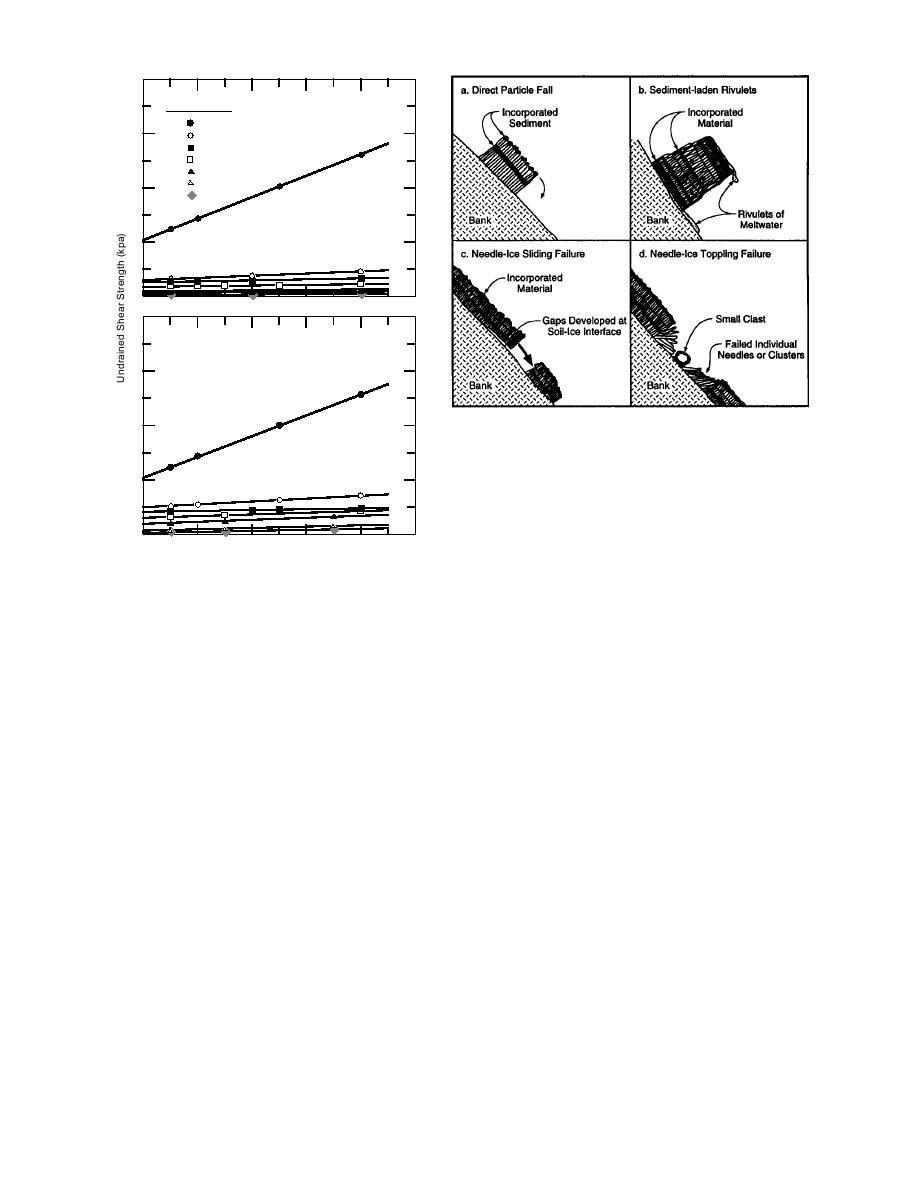
8
No. of Cycles:
0000
6
0001
0002
0004
0011
0016
4
0032
Open System
2
8
6
Figure 3. Bank sediment displacement by needle ice (Lawler
4
1993).
Closed System
Formanek et al. (1984) concluded that the maxi-
2
mum reduction in soil shear strength may result
after only a single FTC, and Benoit and Voorhees
(1990) report the greatest change in the ratios of
the final to initial bulk densities, water contents,
0
2
4
6
8
10
hydraulic conductivities and surface strengths
Number of Days
occurred after one freezethaw cycle, with lesser
Figure 2. Change in undrained shear strength and
changes in the ratios after additional cycles. Van
the thixotropic strength regain in a natural, sensi-
Klaveren (1987) showed that a soil's critical shear
tive clay exposed to FTC (Yong et al. 1985).
strength may be reduced to half of its normal
value after a single cycle.
Thorne (1978) measured about 0.4 in. of river
cycles did not reduce the shear strength as much
bank retreat due to a single frost event and con-
as occurred after the first cycle. Chamberlain (1973,
cluded that when frost events recur frequently
1981) also concluded that the rate of strength re-
they would contribute substantially to overall re-
duction in clay soils decreases as the number of
treat. Lawler (1993) observed the growth of needle
freezethaw cycles increases. Yong and others
ice along a river bank in South Wales, U.K. Needle
(1985) also showed that the rate of strength recov-
ice often forms in late fall or early winter. The
ery of the clay soil was less when subjected to
needles are usually less than 0.01 sq. in. in cross
more FTC (Fig. 2), noted that the rate of recovery
section and up to 34 in. long and form at the soil
was higher in the closed system (no water drain-
surface. They lift soil particles on the bank surface
age after thaw), and surmised that soil particle
as they grow. The particles often tumble off the
bonding may be retained more in the closed sys-
top of the lifted soil and down the bank face or are
tem because of dissolved ions in the pore water
displaced down the face when the needle ice melts
enhancing those bonds.
during the day. Lawler measured the resultant
At first, this seems contradictory to me in that I
displacement of bank face sediment by the needles
would have suspected quicker recovery in the
(Fig. 3) and determined that up to 0.82 lbs. of
situation where excess soil water could drain away
sediment were lifted from a square foot of bank
more rapidly than where it could not. However,
face by growing needle ice. He used erosion pins
their finding illustrates the importance that pore
to measure that 3243% of the actual bank retreat
water quality plays in soil cohesion and strength,
rate of 0.21 ft/yr. at his study site was caused by
as has been shown by others, and further illus-
bank sediment incorporation and transfer down-
trates the complexity of the interplay of condi-
slope by needle ice processes.
tions and processes that affect soil strength.
6



 Previous Page
Previous Page
